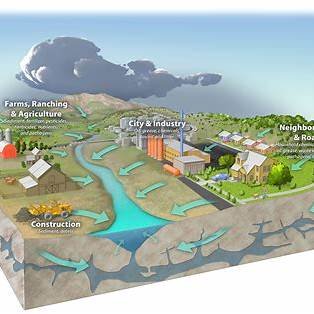Five biggest environmental issues in India in 2024 | WION Climate Tracker
hot top story on climate tracker India’s average temperature has risen by around 0.7 degrees Celsius during 1901 to 2018. this temperature rise is caused by greenhouse gases induced warming leading to climate change as for the United Nations India was the seventh most affected country due to climate change LED extreme weather events in 2019 both in terms of fatalities and economic losses extreme weather events due to climate change have led to 17 out of 20 people in India being vulnerable to disasters like floods droughts and
Cyclones let’s take a look at the five biggest environmental issues in India one of the most pressing environmental issues in India is air pollution according to the 2021 world air quality report India is home to 63 of the 100 most polluted cities with New Delhi named the capital with the worst air quality in the world the study found that PM 2.
5 concentrations in 48 percent of the country’s cities are more than 10 times higher than the 2021 Who air quality guideline level India is the world’s third largest emitter of carbon dioxide despite low per capita emissions about 70 percent of surface water resources in India are polluted every day almost 40 million liters of waste water enters rivers and other water bodies with only a tiny fraction adequately treated a world Bank report suggests that in middle-income countries like India water pollution can account for the loss of up
to half of GDP growth now third on the list is food and water shortages according to the intergovernmental panel on climate change India is the country expected to pay the highest price for the impact of the climate crisis earth.org and environmental data platform says that there is no doubt among experts that unprecedented heat waves are a direct manifestation of climate change March 2022 marked the hottest and the driest month recorded in 120 years India’s Northwest regions have been dealing with a prolonged wave of
scorching and record-breaking Heat now next on the list is Waste Management as per reports experts estimate that by 2030 Municipal Solid Waste is likely to reach 387.8 million tons and will more than double the current value by 2050. India’s rapid urbanization makes waste management extremely challenging currently about five percent of the total collected waste is reportedly recycled 18 is composted and the remaining is dumped at landfill sites last but not the least biodiversity laws India has four major biodiversity
hotspots Himalayas Western Gods Sunderland and indo-burma region these are regions with significant levels of animal and plant species that are threatened by human habitation more than a thousand animal species in India are currently monitored by the international Union for conservation of nature Red List as per WWF and the Zoological Society of London freshwater biodiversity in India has experienced an 84 percent decline since the start of this Century India has lost 19 percent of its total tree cover
Environmental pollution killing more people than war
Environmental pollution contributed to the deaths of about 9 million people in 2015 that’s nearly 15 times as many deaths from war and all forms of violence that staggering figure comes from a study published this week in the medical journal The Lancet here’s Anna Werner this guy is gonna act like it’s breathing with me New Yorker Chelsea Yamada is wearing a special vest on her commute measuring her exposure to air pollution it’s part of a multi-year study looking at pollution hotspots and the impact on cyclists health
it’s smoky it’s thick and you get trapped sometimes if you’re really in their tailpipe sucking it all in despite recent efforts to curb pollution a major new report from The Lancet shows more needs to be done the study found more people died from exposure to dirty air than from health factors including obesity alcohol and a high sodium diet dr.
Philip Landrigan of the Icahn School of Medicine at Mount Sinai most of these deaths are caused by chronic diseases specifically by heart disease stroke lung cancer chronic obstructive lung disease nearly 92 percent of the deaths occurred in developing countries with China and India most affected and children are at the highest risk but each year pollution also kills an estimated 155 thousand people in the US yet the report says pollution can be addressed in the 45 years since the u.s.
passed the Clean Air Act air pollution here has dropped 70% the control of pollution actually saves money because it prevents illness it extends life it helps the productivity of economies in the United States and in countries around the world dr. Landrigan points out that the gross domestic product in the US has increased 250% since the Clean Air Act was put in place in 1970 he says that’s proof Reena that countries can have wealth and prosperity and clean air and a werner thank you so much
The Lancet medical journal published a new study that says environmental pollution contributed to the deaths of 9 million people in 2015 — that’s more than all forms of violence, including war. Anna Werner reports.
Philippines looks to tackle severe water pollution
Every morning rod Ison checks his fish pen his beneficiary man almost all of his life and has recently moved to Manila fishing has always been difficult in the provinces but he says it’s far more challenging in the capital the parent is not so strong today my fish pen has no garbage unlike when the waters are high garbage is everywhere the stench is overwhelming hundreds of Filipino fishermen depend on Manila Bay for their livelihood they admit it is not an ideal place for fishing Manila Bay is one of the most
How Can Contry Polution in top
polluted areas in Manila but they are left with no choice Greenpeace says cleanup activities in Manila Bay show that disposable plastics used just once are one of the leading causes of pollution it says the situation is similar all across the country with giant companies and their customers polluting oceans with their plastic waste in the Philippines where the majority of people live below the poverty line families are pushed to buy cheap goods in small quantities the so called sachet economy responds to the needs of Filipino
consumers but it has also made the country the third biggest polluter of oceans based on a green pea study China and Indonesia ranked first and second we don’t have the enough like an infrastructure to manage our waste we have a good law the ecological solid waste management law but we feel that it’s not implemented properly in all levels of the government the government admits a national policy must be in place we were thought to be ban totally ban the single-use plastic all other packaging materials of similar
characteristics we want that to be banned sunsets over Manila Bay are spectacular but the Philippine capital is gaining an unwanted reputation for its wasted potential jamal al in duggan al jazeera Manila.![]()



